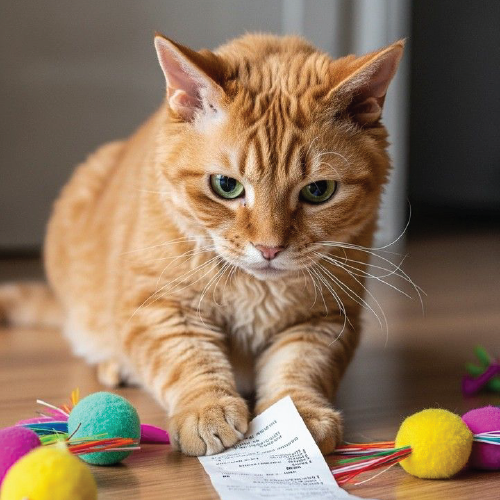Cats use their tails to communicate with other cats and their human friends, just like dogs. However, deciphering what a cat ’s tail position means can be challenging. Is a wag indicative of a pleased or furious cat, for example? What does it indicate when a cat wags its tail, and can this “tail language ”be deciphered?
The thumping of the Tail Could Indicate anger
When a cat wags its tail, it may indicate that it is dissatisfied with its current circumstances. The wagging tail could be a warning indication that your kitty ’s tolerance is wearing thin.
Tail thumping, in particular, may indicate that you should back off. If you ’re petting your cat and its tail starts thumping steadily, then it is probably telling you that it doesn ’t want to be petted any longer. To tell if it is annoyed or not, look at its face and the rest of its body, including its ears.
Even while cats are extremely loving and caring, they do have boundaries, and giving them too much attention may cause them to worry. When your cat begins to display indications of stress, such as tail thumping, it ’s probably a good idea to stop socialising with them.
Anger Could Be Indicated by Tail Flicking
If your cat ’s tail is down but tightly extended away from the body and flicking side to side, it could be an indication that it is unhappy and may become aggressive.
Some cats may flick their tails on the examination table to let everyone know they want to go home, and you may have witnessed this form of tail wagging at least once while at your cat ’s vet.
Compare this to a relaxed cat who is observing its surroundings. In that situation, its tail will still be lowered, but it will be more relaxed and move from side to side with less rigidity and force.
An upward tail could indicate several things.
If your cat is keeping its tail in a vertical, erect position, then it may be having a good time. Because the pet is looking for interaction, motion from side to side is frequently interpreted as a greeting.
If your cat ’s tail is twitching and upright, and it is backed up against a piece of furniture or a wall, it may be spraying to mark territory. However, cats may make this action without spraying in an attempt to grab your attention, or they may be feigning spraying in order to claim ownership.
If your cat ’s tail is upright yet concave, it may be acting defensively or becoming defensively aggressive. In other words, it doesn ’t want to interact with anyone.
Fear is indicated by a tail between the legs or a puffed tail.
Cats, like dogs, will tuck their tails between their knees to show fear or submission. If your kitty is scared and isn ’t wagging its tail, try to decrease or remove whatever is giving it this tension, and console and calm it down.
If your cat is scared, its tail may blow out and stand up straight, while its back arches, and it will take a few minutes for it to return to normal once the source of stress has passed.
Identifying a Happy and fulfilled Tail
If your cat ’s tail is raised high in a comfortable manner, with a slight wagging motion at the end, it indicates that it is happy, ready for attention, and playful.
This is not the same as a tail that twitches while your cat is hunting, anticipating catching its prey or becoming irritated because it can ’t reach the tasty-looking birds outside the window.
Take into account the rest of your cat ’s body.
Even if the position and movement of your cat ’s tail might reveal a lot about its current mood, keep in mind that it isn ’t the only way to assess your pet ’s feelings. Examine its eyes, ears, and overall posture to gain a clear picture of what it is trying to say so you can understand feline body language correctly. The easiest way to figure out what your cat ’s tail waving indicates is to observe its behaviour.






